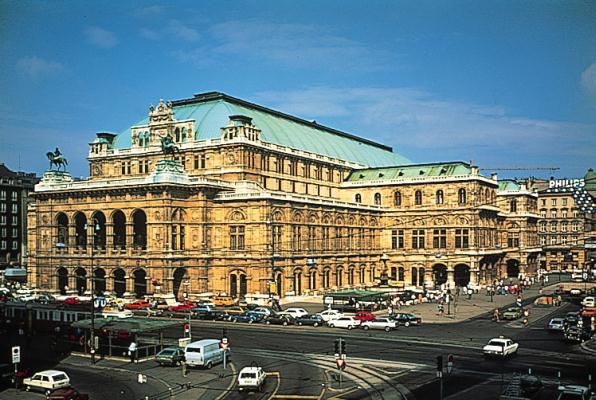" A fistfight apparently broke out after the premiere of Richard Wagner's "Tristan and Isolde" at the Deutsche Oper amid boos for the stage director."
" I was punched in the arm for taking notes during the same production (the usher told me that the opera makes people particularly sensitive)".
"During a new production of Richard Strauss' "Salome" last month, elderly couples laughed in carefree enjoyment at a scene in which the protagonist wraps her legs around Jesus' waist as he hangs in agony from the cross".
 |
Deutsche Oper |
On any given weekend, opera-goers in Berlin are hard pressed to sift through their options. Between tightly knit productions under the internationally coveted conductor Daniel Barenboim at the Staatsoper, the regular appearance of star names at the Deutsche Oper, and a flood of zany shows at the Komische Oper, one wonders how these myriad opera houses manage to co-exist in one city.
Neither Paris, New York, nor any city in Italy - where opera runs through people's veins - can boast three state-subsidized opera houses. Following German reunification in 1990, Berlin effectively inherited two state operas, the Staatsoper in the east and the Deutsche Oper in the west, as well as the Komische Oper, a smaller house around the corner from the Staatsoper that caters to opera for the masses.
Given that Germany possesses one-seventh of the world's opera houses, perhaps the density in the capital shouldn't be surprising. Neither should the fake blood and nudity that curiously infiltrate many productions. As a German saying goes, everything is allowed as long as you don't bore the audience.
Sharing the wealth
Yet even aficionados seem to think that three opera houses is simply too many. Two would be good, a well-respected German critic told me recently. The director of the Staatsoper, Jürgen Flimm, told the Berliner Zeitung newspaper upon entering the position last year that the three-house system was "pure populism."
With the reestablishment of Berlin as a cultural capital, its opera houses have been both central assets and testimony to an unresolved conflict between east and west. Although regimes on both sides of the Wall promoted their respective houses, the economic resources of the Deutsche Oper in the former West far overtook those of the Staatsoper in the East. Just after reunification in 1991, the New York Times reported that the Deutsche Oper's endowment was roughly twice that of the Staatsoper.
 |
Staatsoper |
Twenty years later, the tables have turned. The Staatsoper receives 3 million euros ($4.3 million) more in city funding than its western counterpart. In addition, its 18th-century home on the Unter den Linden boulevard is currently being restored at the cost of 239 million euros, according to a recent figure, while the opera company temporarily occupies the Schiller Theater in the west.
The Deutsche Oper, meanwhile, has plans to renovate its stage machinery, but for unknown reasons will not implement them in the coming season.
In an even more prominent example, while the orchestras of the Deutsche Oper and Komische Oper were on strike intermittently last fall, Barenboim's Staatskapelle played on due to extra funding he had secured from the federal government. While musicians at the Deutsche Oper were handing out flyers in the lobby, local newspapers did not shy away from pointing to the iniquity of the situation.
Punches thrown off-stage
And yet, the competition remains healthy. The Deutsche Oper, a 50s-style boxlike building in the Charlottenburg district, has held its own with a glossy advertising campaign designed by the fashion designer Wolfgang Joop and its roster of internationally recognized names.
As for the Komische Oper, it remains unrivaled as a bastion of contemporary aesthetics and progressive programming. With an extensive outreach program and Turkish subtitling in the making for next season, one could go as far to say that the company is reinventing the concept of an urban opera house.
 |
| Komische Oper |
At the Komische Oper, the mood remains lighter, if not baffling so. During a new production of Richard Strauss' "Salome" last month, elderly couples laughed in carefree enjoyment at a scene in which the protagonist wraps her legs around Jesus' waist as he hangs in agony from the cross.
While the critics unabashedly slammed the production, it seems many audience members will pay good money for everything from the most twisted and brooding to the most slapstick of interpretations.












